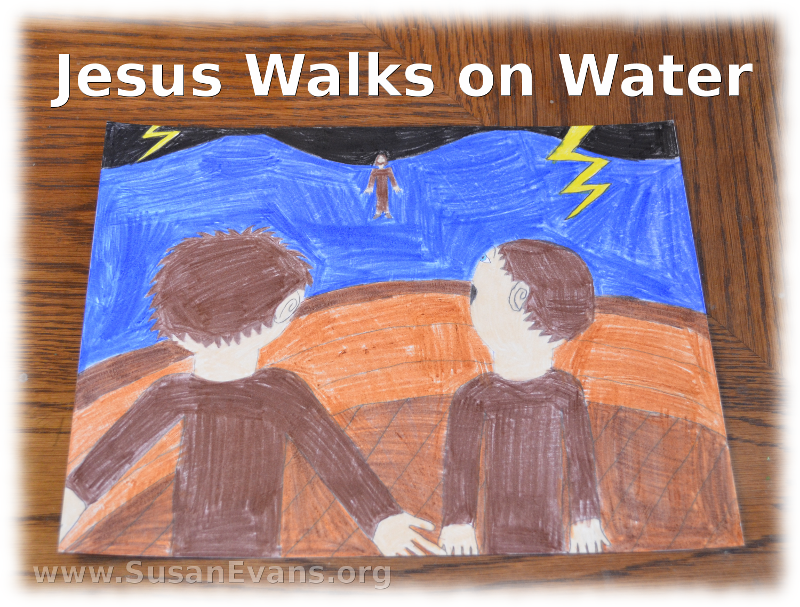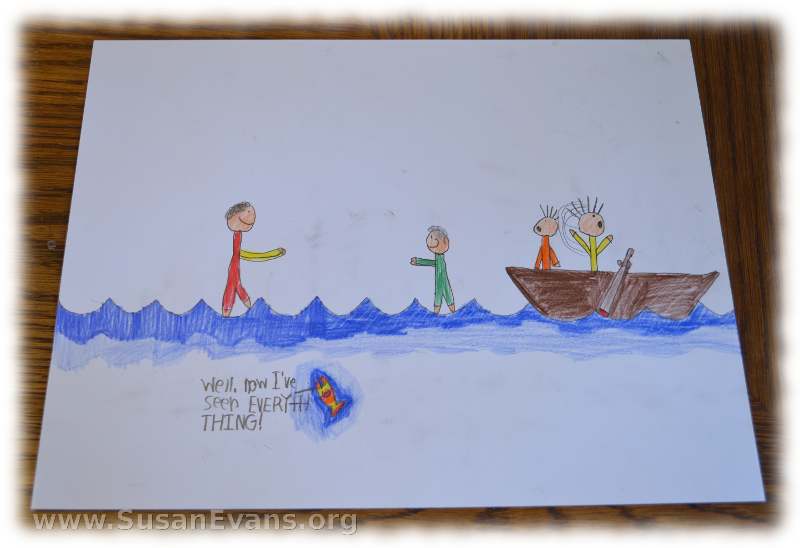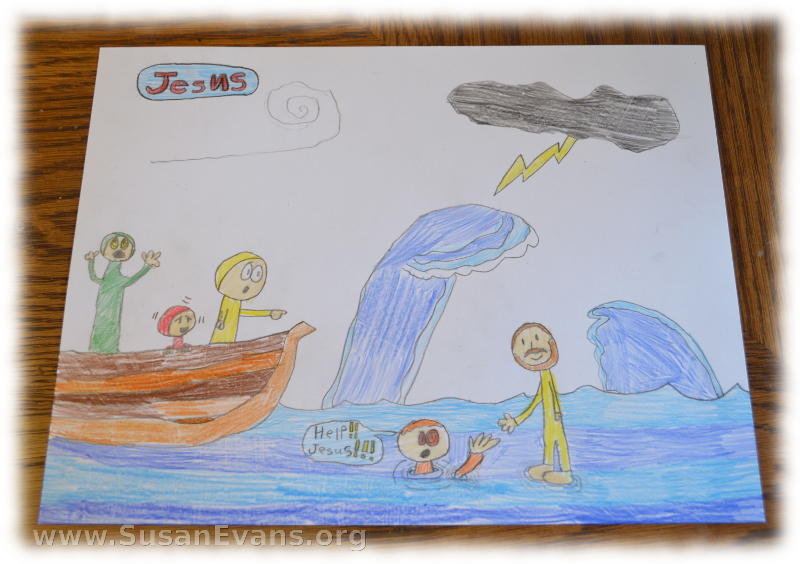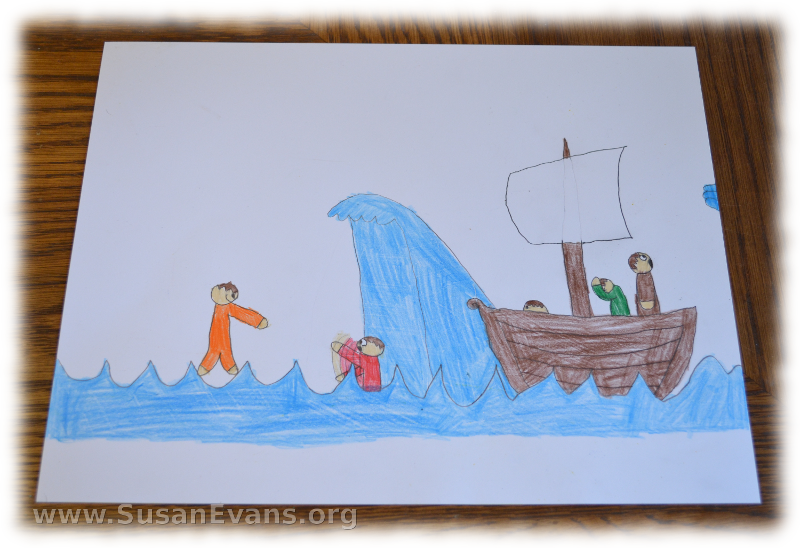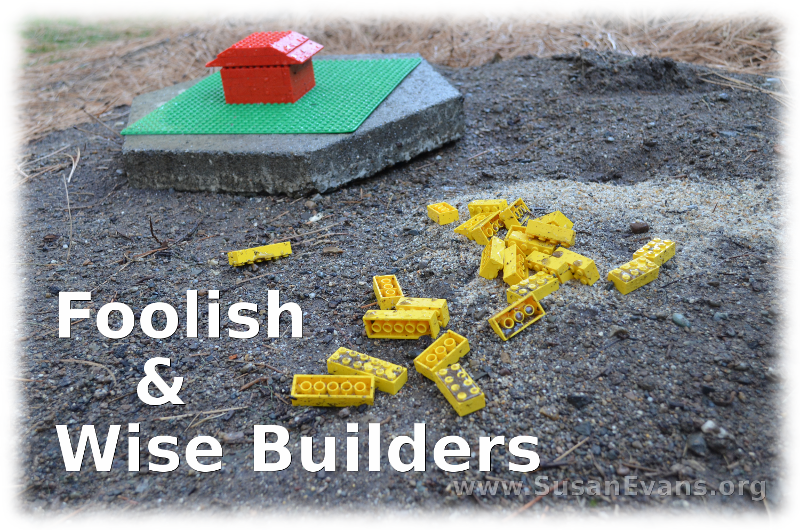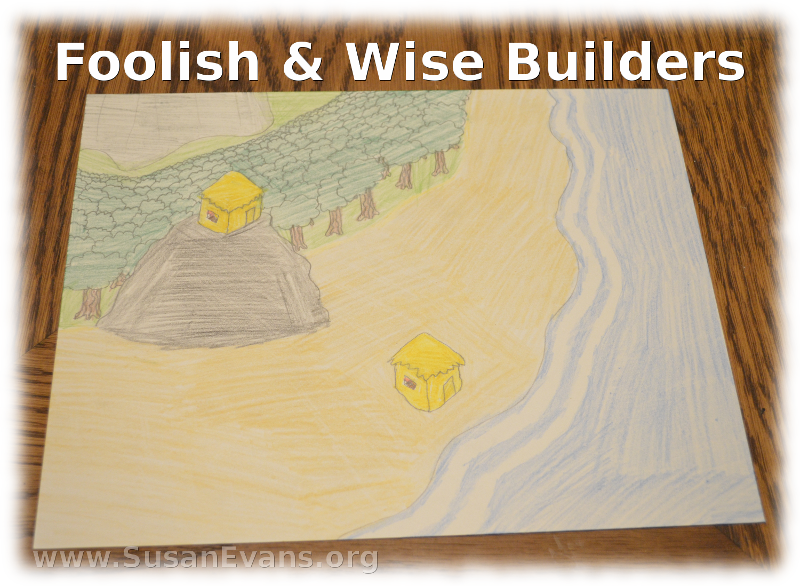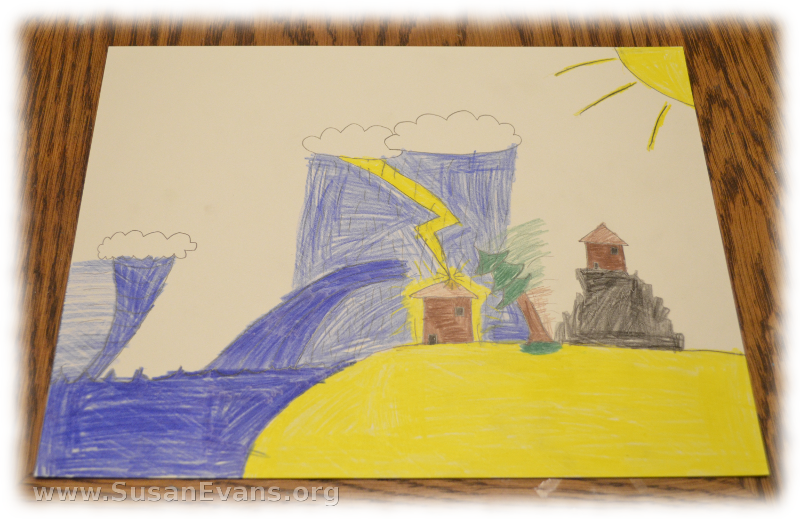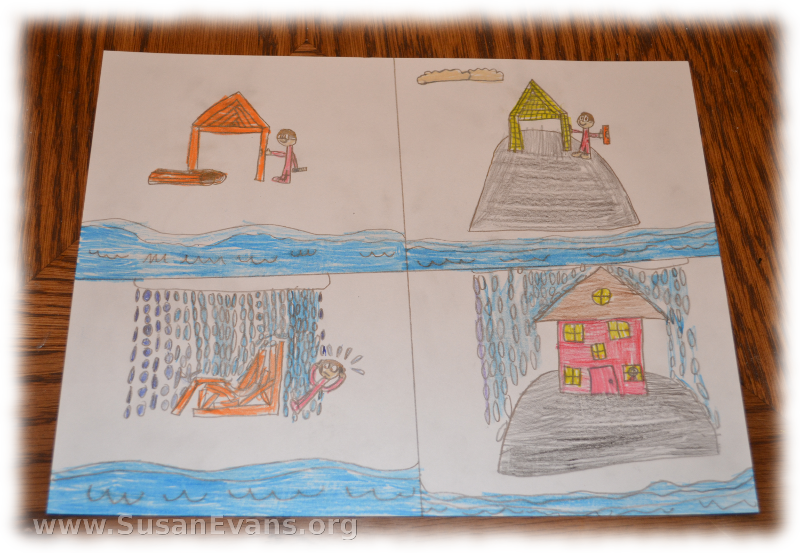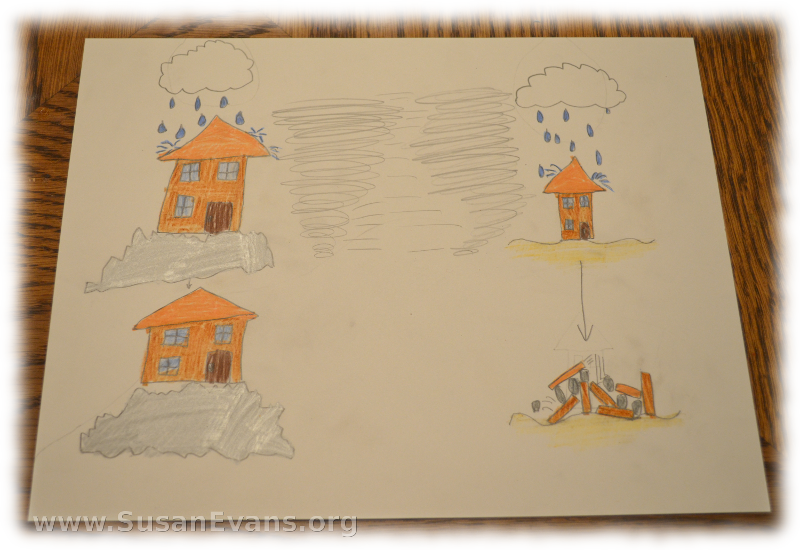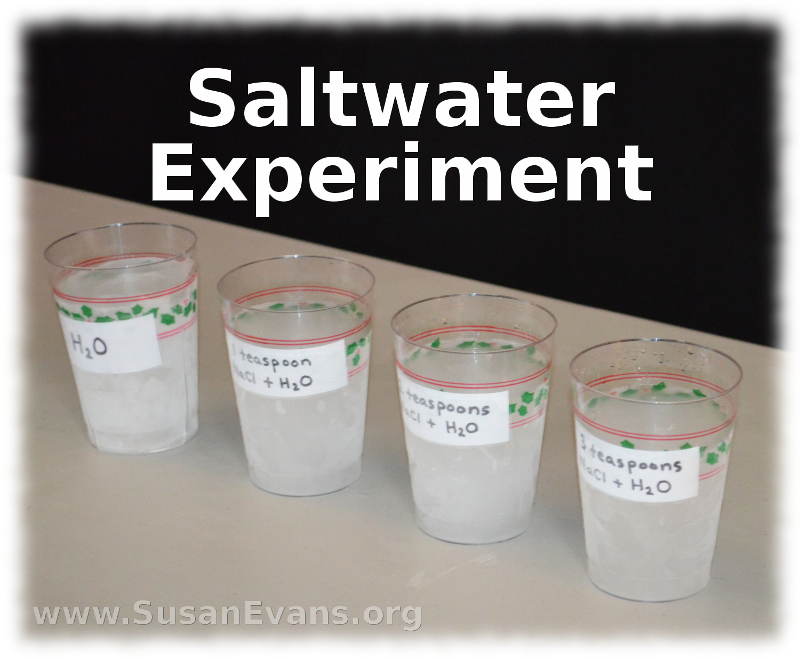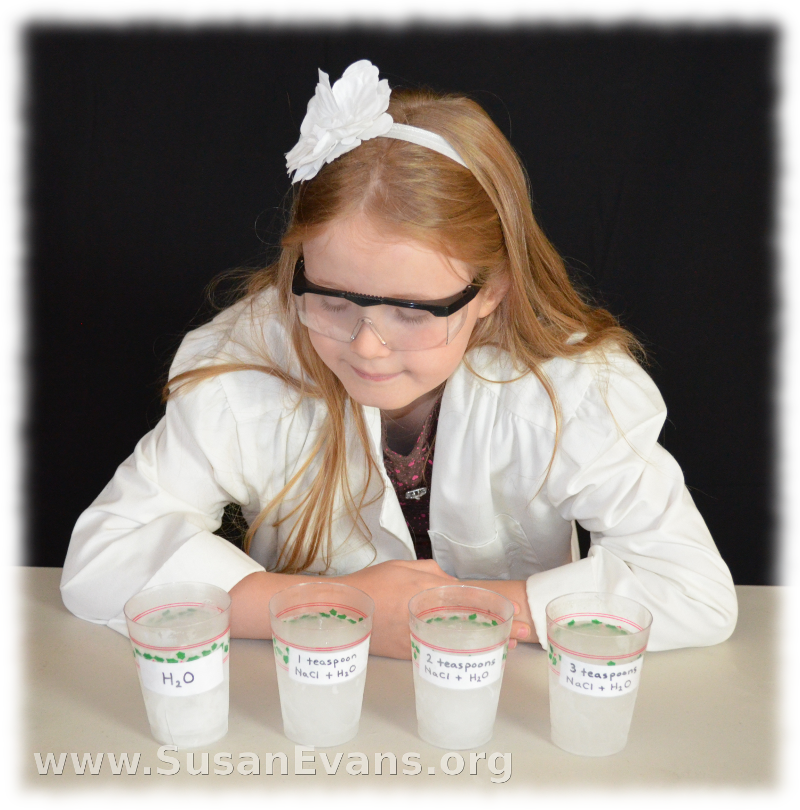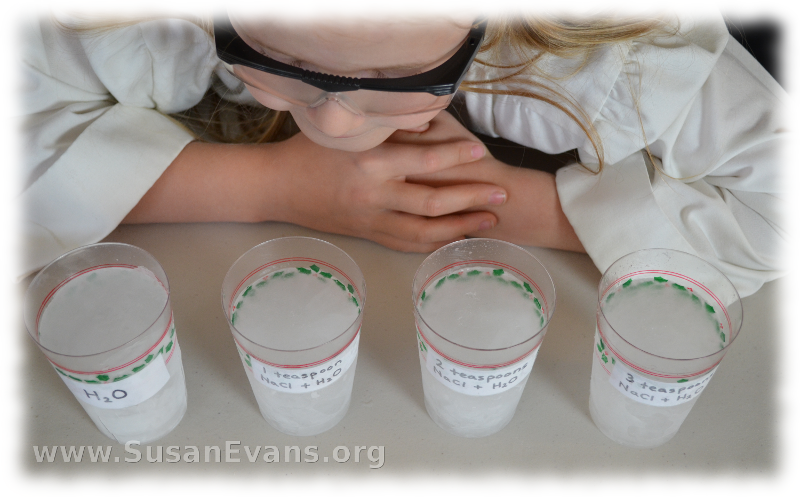This post contains affiliate links. I was compensated for my work in writing this post.
Today we will be making saturated solutions. What is a saturated solution? It’s when the water is holding the most of a substance that it possibly can. We will be making a sugar solution and a salt solution, and we will do a fun identification game at the end, to see if we can identify which is salt and which is sugar. We are using Christian Kids Explore Chemistry by Bright Ideas Press, and this experiment will help you to understand saturated solutions.
I labeled the four glasses before doing the experiment. Two were labeled salt and two were labeled sugar. I put the labels on the bottom of the glasses. I used masking tape and permanent marker.
We poured water into each of the four glasses. Then we placed one teaspoon of salt into the water and stirred it. We placed a second teaspoon and a third teaspoon and so on until the water would no longer hold any more salt. At this point, some of the salt will fall to the bottom because the water itself can hold no more salt. The water is now saturated with salt. Do the same to another glass of water.
Using sugar, place the sugar, one teaspoon after another, into the water, stirring the water after each teaspoon. As soon as the water will hold no more sugar, the water is saturated with sugar. IV’s at the hospital are filled with glucose, so what is pumped into your body when you want to faint is similar to this saturated sugar solution.
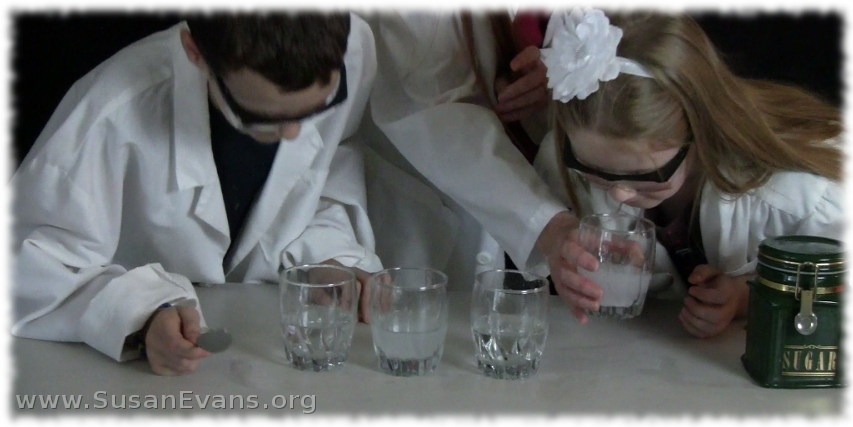 Once you have two glasses of sugar solution and two glasses of salt solution, have your kids close their eyes. (Blindfold them if they look like they are cheating with one eye open.)
Once you have two glasses of sugar solution and two glasses of salt solution, have your kids close their eyes. (Blindfold them if they look like they are cheating with one eye open.)
Slide the glasses around, shuffling their order so your kids can’t tell which solution is which. Now have your kids open their eyes, or take off the blindfold. Have the kids try to figure out which solution is which based on smell. Can you do it?
Now try to identify which solution is which by tasting them. The salt water is really strong and will remind you of ocean water crashing over you. The sugar water is certainly easy to identify, too!
You can watch this experiment here:



